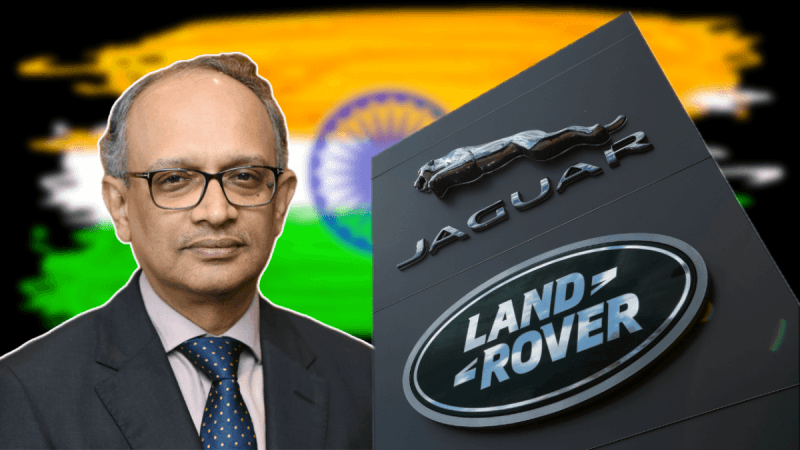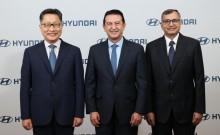
When Tata Motors Group CFO P B Balaji was named the next Chief Executive Officer of Jaguar Land Rover on August 4, the announcement did more than mark a leadership transition. It marked a milestone in the evolution of global corporate leadership. For the first time, an Indian executive will lead the prestigious British luxury auto manufacturer an iconic marque in the West, but one owned by India's Tata Group. Balaji's elevation is emblematic of a deeper shift underway: the world is reimagining what kind of leadership the future demands, and increasingly, it is turning to India not just for talent, but for vision.
Balaji's journey, from IIT Madras to IIM Calcutta, from Hindustan Unilever to Singapore's financial corridors, and now to the top office at Jaguar Land Rover, reflects the growing convergence between technical insight, strategic financial thinking, global mobility, and digital fluency. His story offers not just an inspiring arc, but also a clear set of lessons and imperatives for boardrooms, emerging leaders, and policy makers navigating the age of complexity, connectivity, and convergence.
The Shift from Financial Stewardship to Strategic Leadership
Balaji represents a modern prototype of leadership: someone who moves seamlessly from balance sheets to boardroom transformation, and from operational discipline to long-range innovation. As Group CFO at Tata Motors since 2017, he wasn't just a financial custodian, he became a strategic partner to the board, steering the company through a massive capital-intensive transition toward electric mobility and technological reinvention. Under his guidance, Tata's automotive vertical saw a disciplined deleveraging of debt, recalibrated investment priorities, and a restructured path to profitability, all while enabling JLR to accelerate its pivot toward electrification and digital capability.
What is particularly noteworthy is that Balaji's rise is part of a growing global pattern: the emergence of finance professionals as CEOs. But unlike conventional finance executives of the past, today's successful CFOs are not merely cost controllers; they are architects of transformation. They combine capital intelligence with strategic foresight and operational credibility. Balaji's leadership through crises, including pandemic-era supply disruptions and volatile commodity cycles, has already demonstrated his ability to think systemically and act decisively. His appointment is therefore not just a recognition of past performance, but a bet on a new era of integrated, forward-leaning leadership.
The Global Indian Executive: Integration, Not Imitation
This moment also signals something larger than one man's success: it marks the growing presence of Indian-origin leaders at the helm of major international corporations. From Sundar Pichai at Google and Satya Nadella at Microsoft to Leena Nair at Chanel, Indian talent is now central to global boardroom conversations. But Balaji's appointment is distinct. Jaguar Land Rover is a company with deeply British heritage and a European operational base, but with Indian ownership. In elevating an Indian to the CEO position, Tata Group is doing more than asserting its authority; it is demonstrating confidence in the maturity, sophistication, and global readiness of Indian leadership.
Unlike earlier generations of expat executives who adopted Western business norms wholesale, today's Indian leaders bring a different value: they integrate rather than imitate. Balaji's experience across continents from treasury operations in Singapore to board-level roles in India and Europe has shaped a leadership profile that is cosmopolitan, yet grounded. It is this cross-cultural fluency, combined with an ability to think in systems rather than silos, that makes him and others like him uniquely relevant for this moment.
The Era of Digital-First Leadership
While much attention has rightly focused on Balaji's financial and strategic credentials, one must not overlook his digital orientation. In today's automotive industry, the ability to understand software-defined architecture, data analytics, connected mobility, and over-the-air (OTA) technologies is no longer ancillary, it is foundational. The CEO of any automobile company in 2025 must grasp not just fuel economy and design language but also data monetization models, cloud-enabled maintenance systems, and cybersecurity imperatives.
Balaji's recent roles placed him at the intersection of capital planning and digital investment. He has overseen resource allocations into next-gen EV platforms, mobility-as-a-service experiments, and software stack development. As Gartner recently noted, over 70% of future CEOs in legacy sectors will be assessed based on their ability to lead digitally enabled ecosystems, not just traditional operations. Balaji exemplifies this shift. His appointment reflects a growing realization that digital strategy cannot be delegated, it must be owned at the very top. In that, he is not just the CEO of a car company. He is the steward of a data-rich, AI-interfaced, software-augmented global platform.
The Emerging Imperatives of CEO Leadership
Balaji's elevation brings into sharp focus the evolving skill set that global leaders must now embody. First, there is the imperative of technological fluency, not necessarily coding knowledge, but the ability to understand, question, and steer tech-enabled business models. The future of enterprise competitiveness will hinge not only on engineering excellence or supply chain resilience, but also on algorithmic ethics, digital trust, and platform agility.
Second, strategic capital stewardship is now expected to be balanced with purpose-led governance. Boards today demand more than return on equity; they demand clarity of vision on sustainability, transparency on ESG metrics, and alignment with social impact. Balaji's history of disciplined capital deployment combined with a long-term climate lens positions him as the kind of leader investors now seek: prudent yet progressive.
Third, narrative competence is no longer a soft skill it is a strategic capability. CEOs today must be able to communicate complexity with clarity, across audiences as varied as regulators, governments, Gen Z employees, and institutional investors. In an age of public scrutiny and global volatility, the ability to shape perception and maintain trust is central to effective leadership.
And finally, there is the new premium on geopolitical intelligence. CEOs must now understand more than just markets, they must understand the currents of trade wars, climate diplomacy, and data sovereignty. From semiconductor supply chains to carbon border taxes, from sanctions regimes to digital public infrastructure, the lines between corporate strategy and policy response are vanishing. Balaji's exposure across Asia and Europe, and his proximity to strategic discussions within the Tata ecosystem, offer a valuable foundation for such complexity.
The Boardroom Challenge: Are We Grooming Enough Balajis?
Balaji's appointment is a reminder that excellence is not born overnight it is built. For Indian corporations, his rise poses a strategic challenge: are we investing systematically in creating a cadre of such future-ready leaders?
Too often, leadership development is treated as an HR function rather than a strategic priority. Succession planning becomes reactive. Exposure to complexity is limited. The Balaji model shows the opposite: a long arc of cross-functional exposure, international mobility, high-impact assignments, and increasing strategic responsibility. If more Indian firms are to take the global stage, they must build not just brands, but leadership benches with this kind of long-view integration.
The same applies to public policy institutions, universities, and corporate learning environments. Are we training professionals to think across disciplines combining engineering and ethics, finance and foresight, digital literacy and design thinking? Are we equipping young minds not just for employability, but for leadership?
The Playbook for Emerging Leaders
For young professionals aspiring to boardroom relevance, Balaji's career offers an instructive path. One, cultivate depth in at least one core domain be it finance, technology, operations, or product design but actively broaden one's horizon across adjacent domains. Two, embrace assignments that stretch your comfort zone, particularly those involving transformation, crisis, or ambiguity. These are the crucibles where leadership is forged. Three, develop fluency in digital frameworks, business storytelling, and stakeholder navigation. The modern leader is not just a thinker, but a communicator and integrator. And four, remain grounded. Influence today is no longer asserted; it is earned through clarity, credibility, and humility.
The Systemic Stewardship Model
P B Balaji's ascent to the CEO office at Jaguar Land Rover is not merely a celebration of individual achievement—it is an affirmation of a new archetype of leadership. He is not a corporate warrior in the traditional sense, nor a visionary tech maverick. He represents something deeper: a systemic steward. A leader who sees the interconnections between capital and climate, technology and trust, purpose and performance. A leader who integrates rather than dominates.
As global industries move into a future shaped by artificial intelligence, autonomous systems, climate pressures, and post-globalisation realignments, the demand will be for leaders who are not just efficient executors, but wise navigators. Balaji's journey should inspire more than pride. It should spark preparation. The world is ready for Indian leadership. The question is: are we ready to supply it at scale, with consistency, and with vision?
In that answer lies the future of India Inc. And the promise of a more intelligent, integrated, and inclusive global economy.
[Major General Dr. Dilawar Singh, IAV, is a distinguished strategist having held senior positions in technology, defence, and corporate governance. He serves on global boards and advises on leadership, emerging technologies, and strategic affairs, with a focus on aligning India's interests in the evolving global technological order.]

















